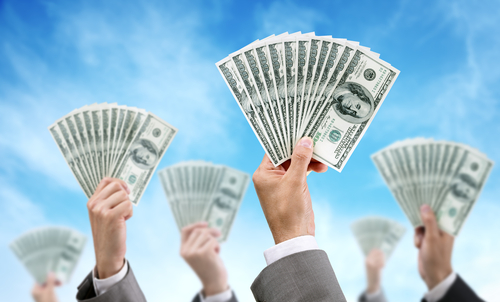Financial bubbles are a funny thing.
During a bubble, most investors are in denial.
Boosted by tales of soaring prices, the siren calls of “This time it’s different!” are difficult to resist.
Yet a financial bubble seems obvious – even absurd – once it pops.
All financial bubbles are a mix of unbridled greed, newfangled valuation measures and a disdain for conventional thinking.
I love studying the details of financial bubbles and the larger-than-life characters who promote them.
Whether it’s the railroad boom of the 1840s, the British bicycle bubble of the 1890s or the dot-com bubble of the 1990s, each story is unique.
Yet all bubbles have characteristics in common.
The challenge for an investor is to identify a bubble – and better yet, profit when it pops.
The Formula for a Bubble
A pair of Maryland business school professors, Brent Goldfarb and David A. Kirsch, tackled this issue in their book, Bubbles and Crashes: The Boom and Bust of Technological Innovation.
Specifically, the pair focused on identifying a subset of financial bubbles: major technological innovations.
Using a sample of 88 technologies spanning 150 years, Goldfarb and Kirsch found four factors predicted when conditions were right for a technology bubble.
1) Uncertainty Around the Innovation
Technology bubble stocks feed on uncertainty.
And as with option prices, the more uncertain the outcome, the higher the stock price.
This uncertainty stems from untested business models.
When radio became popular in the 1920s, no one knew how it would make money.
Would it be radio manufacturers?
Would profits come from advertisers and program sponsors?
Or would money be made from subscription fees?
Investors ask the same questions during the wild west period of any new technology, whether it’s the internet, 3D printing or electric vehicles (EVs).
And the greater the uncertainty about the outcome…
The more chances investors have to invest in the parts of the value chain that they bet will be most valuable.
Bet on the right horse, and you can make option-style returns.
Bet on the wrong horse, and your investment will turn out to be worthless.
2) Large Numbers of Novice Investors
Inexperienced investors are always ready to chase any new and exciting technology.
Over the past decade, we’ve had Chinese small caps, cryptocurrencies and EV stocks like Tesla (Nasdaq: TSLA).
Today newbie investors are called “Robinhood” investors. Instead of camping out at “bucket shops” watching stock tickers as they did in the 1890s, these investors trade stocks on their iPhones.
Seasoned investors are far more skeptical of new technologies.
Sir John Templeton shorted internet stocks at their peak.
Charlie Munger famously called Bitcoin “rat poison.”
Wall Street’s leading hedge fund managers Jim Chanos and David Einhorn have lost millions shorting Tesla.
Yet, as Chanos’ and Einhorn’s losses show, in a technology bubble, the less experienced you are, the smarter you look.
That is, until the day the bubble pops.
3) The Opportunity to Invest in “Pure Play” Firms
“Pure play” firms are closely tied to the new technology.
This technology could be the bicycle, radio or internet stocks. The “purer” the play, the more attractive the stock.
Goldfarb and Kirsch cite the cautionary tale of eToys, a pure internet play on toys.
“We’re losing money fast on purpose to build our brand,” Toby Lenk, CEO of eToys, proudly proclaimed in February 2000.
At that moment, eToys was trading at $86 a share, implying an enterprise valuation of $7.7 billion.
That was 35% more than brick-and-mortar industry leader Toys “R” Us.
Back in the “real world,” in 1999, eToys’ revenues were $30 million.
The same year, Toys “R” Us took in $30 million in a single day.
By November 2000, eToys’ stock had fallen from $86 to $6.25 a share.
The stock eventually fell to $0.09 a share, and eToys shut down in March 2001.
And the fate of eToys is hardly unique.
4) A Compelling Story
A compelling story is another necessary condition of technology bubble stocks.
Charles Lindbergh’s trans-Atlantic flight helped drive the story of an optimistic future for aircraft companies.
Elon Musk’s predictions about EVs, solar energy and a million humans on Mars by 2050 are part of this long tradition.
A compelling story makes Tesla more exciting than GM (NYSE: GM), even though GM also makes EVs.
A compelling story makes Bitcoin more exciting than gold, even though gold has been a store of value for millennia.
As Nobel Prize-winning psychologist Daniel Kahneman pointed out, it’s easier to generate a good story when we have fewer hard facts.
The less we know, the more we can fill in with our imagination.
The lesson for investors?
In the words of Goldfarb and Kirsch…
These mistakes have been repeated countless times. That we get fooled is not surprising; narratives and stories are how we think. But with a better idea of how, when, and for whom these stories become costly, we can better avoid them.
So what do you think? Are we in a bubble? Or do you think current valuations are justified?
Let us know in the comments section.
Good investing,
Nicholas
Click here to watch Nicholas’ latest video update.
For the latest news from Nicholas, connect on Facebook and Twitter.

